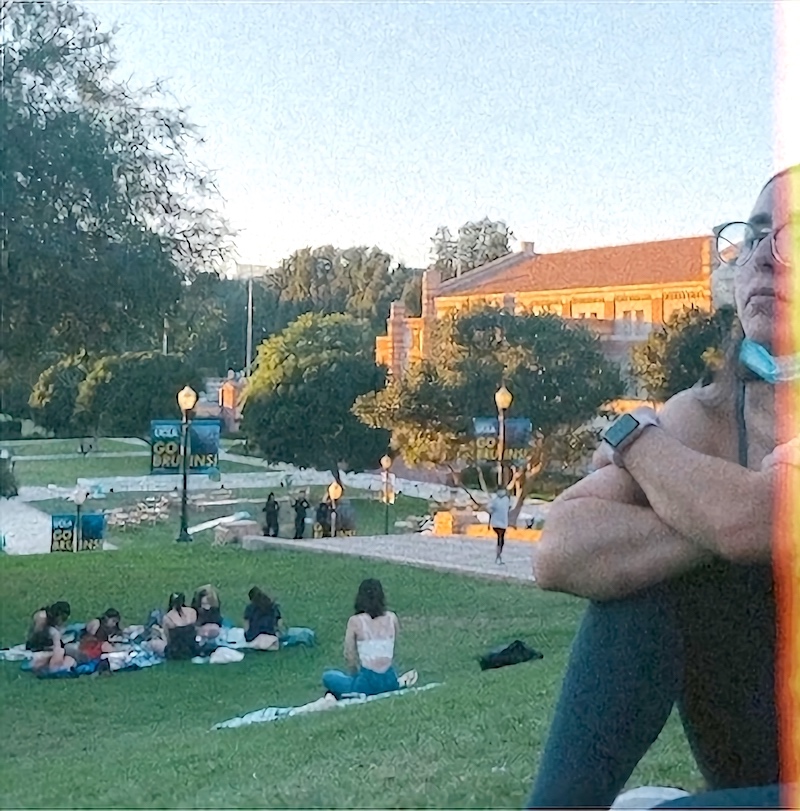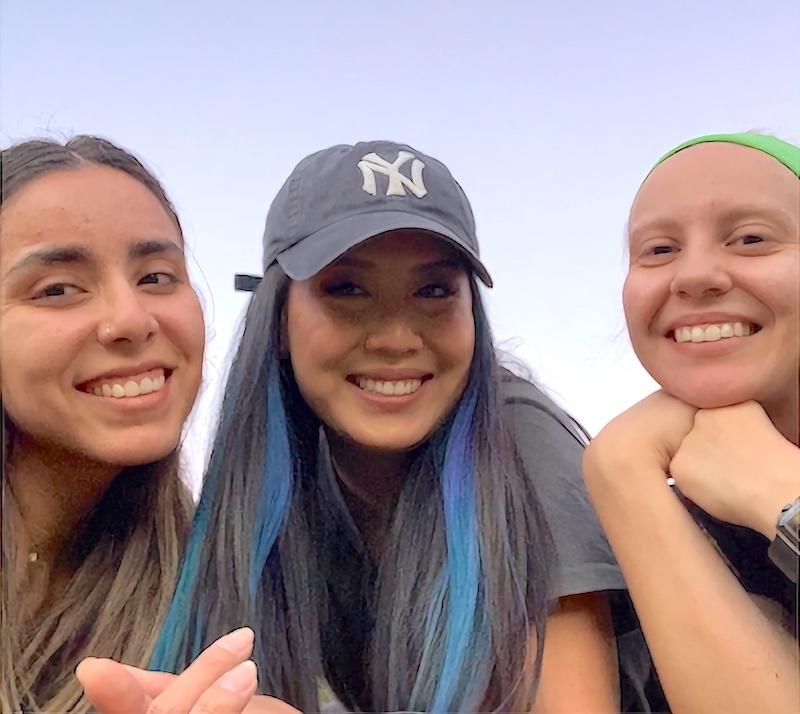Student Blog
My Experience with the Pen Pal Program ⟩
December 13, 2021, by Global Initiatives Team
By Abraham Ramirez, Entry-Level Professional Master’s student
Editors Alison Chang and Vanessa ElShamy
Entry-Level Professional Master’s students
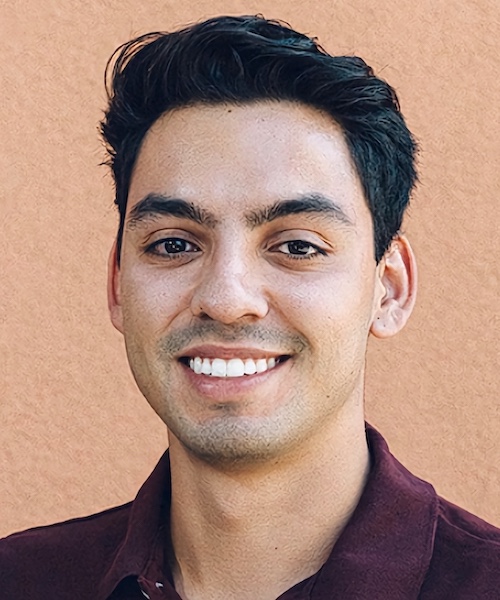
Abraham Ramirez
One of the meaningful projects that I’ve been involved in within Global Initiatives is the Pen Pal Program. I was lucky enough to be connected to two students in Colombia who were both in the same year at the Escuela Colombiana de Rehabilitacion. This was a great opportunity to learn about occupational therapy and its scope of practice in Colombia. My pen pals and I communicated in Spanish because it’s the most widely spoken language there.
What is the most memorable letter that you’ve received from your pen pal?
Even though the program has the word “pen” in the title, my pen pals and I decided to communicate through Instagram messenger via group chat, as well as Zoom when we found the time. Our group chat conversations revolved mostly around the OT profession in our respective countries. However, the most meaningful experience was communicating over Zoom. We talked a lot about differences in culture between Mexicans and Colombians, since I’m culturally Mexican. We also discussed nuances in Spanish and how the language has evolved in Colombia and Mexico. It was interesting to find the beauty in the uniqueness of our cultures, as some may make assumptions that countries in Latin America are all similar.
What is the best thing you have learned from your pen pal?
I learned about how OT education is different in Colombia compared to in the U.S. In Colombia, you currently only need a bachelor’s degree to practice as an OT. Additionally, from the way they explained their curriculum, it seemed like there’s an emphasis on hands-on approaches. I also like that they place emphasis on OT in the “sector laboral,” or “the workplace.” For example, one of my pen pals had a rotation at an airport where she completed ergonomic assessments for the personnel.
What message would you send to your pen pal right now if you had only 2-3 sentences to say it?
If I were to send a message to my pen pals right now, I would honestly just say that I appreciate their openness to friendship, even though there are hundreds of miles between us. It’s great to know that there’s people across the world that enjoy speaking with you.
⋯
My Experience in Creating the World OT Day Video for the USC Chan Division ⟩
November 29, 2021, by Global Initiatives Team
Diversity International Videos What are OS/OT?
By Kashvi Shah, Post-Professional Master’s student
Editors Michelle Plevack and Abraham Ramirez
Entry-Level Professional Master’s students
“Our sense of belonging can never be greater than our level of self-acceptance.” — Brené Brown.
At USC Chan, we have a diverse global community with a significant percentage of international students. Most of them struggle to find their sense of belonging in this new environment and find it challenging to develop resilience. However, “true belonging does not require you to change who you are: it requires you to be who you are” (Brené Brown).
Hence, on this World OT Day, I thought it would be a great idea to involve our student community in celebrating ourselves and our profession. I approached Dr. Daniel Park at the Global Initiatives office with the idea of creating a short video film of our students on the theme by WFOT (World Federation of Occupational Therapists): Belong, Be You. I am sure you began to wonder what these words mean to you. And so did I.
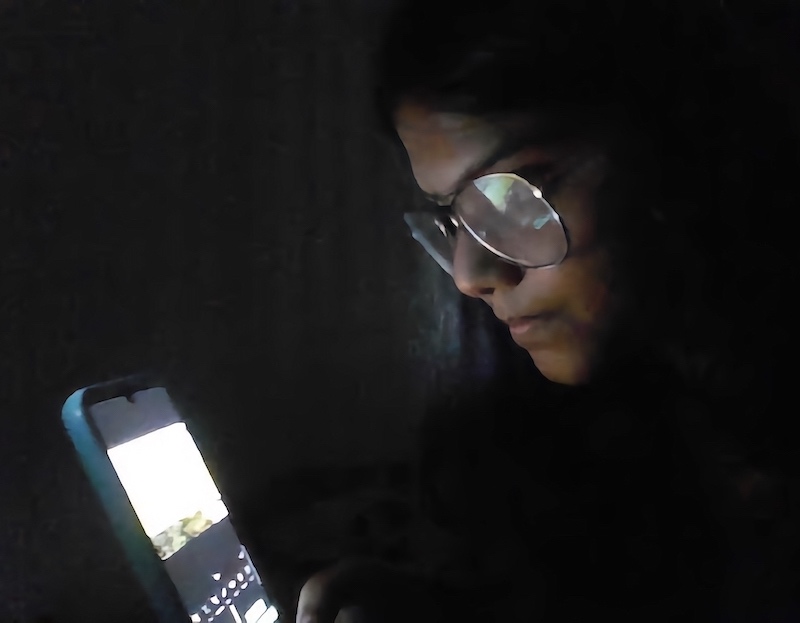
Kashvi in the process of World OT Day video editing
Earlier, I was excited about this project as I found an opportunity to contribute to this with my interest in videography and editing. However, soon after my excitement turned into anxiety. The technical aspects of videography then seemed less challenging than the conceptualization of this video, which was more entangled than expected.
Fortunately, I had the assistance of Marvyn Ngo, our MA-1 Student Ambassador at USC Chan, who always corroborated my ideas and furthermore, helped in reaching out to students for participation in the video.
The most exciting and enthralling part of this process began next, as it was finally time to put together what the participants had shared. Ann Beattie once said “People forget years and remember moments.” That is exactly what the video clips from our participants’ cherished moments were. They could feel their belonging in celebrating who they really are! I enjoy dancing as a meaningful occupation wholeheartedly and being myself is my true belonging. I was glad to see how all our participants found meaning in different activities.
For me this experience was so enriching. From facing the challenges of generating ideas to the support in executing them, and from the excitement of creation to the anxiety of outcome, it was indeed a whirlwind. For this opportunity, I am grateful to those at the Chan Division who added meaning to my belonging at USC.

Kashvi enjoying dance, Being herself!
References
Brown, B. (2012). Daring greatly: How the courage to be vulnerable transforms the way we live, love, parent, and lead. New York, NY: Avery.
Brown, B. (2017). Braving the wilderness: The quest for true belonging and the courage to stand alone. New York, NY: Random House.
Beattie, A. (2002). Where you’ll find me and other stories. New York, NY: Scribner.
⋯
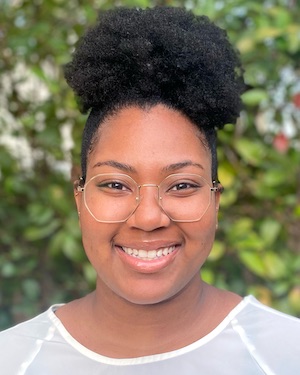
The ABCs and 123s of NBCOT Prep ⟩
November 24, 2021, by Kayla
The NBCOT, the certification exam that solidifies new graduates as a ~real~ OT. For most, this is the last big exam in your academic career and a reminder of just how far you have come; quite literally everything has led you to this point.
So, let’s get right into it; as with many things in life, there is bad news and good news. Bad news first, studying is going to be stressful and require discipline and dedication; but the good news, you are NOT alone and it won’t last forever. During the process of studying I eventually gathered the sense that the NBCOT is like a rite of passage; not only because every OT has to take it, but because everyone remembers that unique time and the experience of it all. Everyone you speak to is going to have study tips and advice to give you . . . so it would only be right to pass unto you the wisdom that was imparted on me. Without further ado, I give you, the NBCOT ABCs and 123s.
ABCs
N — Nail Down a Study Schedule
One of the first things you’ll want to do is create a study schedule, including determining how long you want to study overall and how many hours per day/week. The next step I took was to determine my study schedule and luckily for me (and you) there are many readily available online. I chose not to reinvent the wheel and use a pre-existing study guide because that worked for me, but creating your own is also an option. This step is all about formulating a study schedule that meets your needs and makes sense to you!
B — Build Endurance
This exam is four, count them, four hours long. A huge component to success is training your body and mind to be able to tolerate sitting in a chair and more importantly focusing and thinking clearly for that long. One of the best ways to do this is to gradually increase the amount of time you are in complete focus/study mode. Consistency is key in building test endurance.
C — Choose Exam Materials That Fit Your Learning Style
There are so many study materials out there and so many different opinions on the usefulness, but ultimately what really matters is how they fit with your unique style of learning. Below I’ve listed some commonly used study materials and a little bit about them.
AOTA Exam Prep: This resource consists of practice questions, practice tests, informational PDFs, and flash cards on virtually every practice area and study topic. This resource also provides rationale for the correct answers to questions, I personally found this very helpful! The price of these materials is $149 for AOTA members and $209 for non-members. (Pro-Tip: USC professors normally send out an email to get a reduced group rate on this resource so be on the lookout for that when the time comes around!)
NBCOT Study Pack: This resource has a pre-test, domain-specific questions, mini tests, flash cards, and study games to help you along the way. The most valuable components to me were the practice test and the full practice exam. The consensus among my classmates was that this resource was most useful for getting the feel of how questions would be asked and the format of the exam. There is also a myth that you are likely to score within 10 points (more or less) than your score on the full practice exam; my score proved the myth right in my experience! This resource is $75.
OT Miri: On top of this being a completely free resource, it is so useful! The videos are a great way to learn or solidify the information you’re studying. Personally, I absolutely LOVE OT Miri, she’s so relatable, covers a wide range of study topics, and presents information in a way that’s easy to understand and easy to remember. I’ll be singing the Finkelstein Test song for a long long time (IYKYK).
OT ExamPrepper Podcast: This is another free resource, this podcast is dedicated to helping students like us succeed on the board exam. The host explains study topics using pop culture references and creates clever mnemonics to help you remember information. There are even visual and study guides to refer to while listening to the podcasts; they’re great to listen to during a workout or on your daily commute!
TherapyEd: The TherapyEd book often gets a bad reputation because it is dense and has a lot of information. This is a very comprehensive resource that covers a lot of content and specifics within each study topic. I found the corresponding online questions and practice exams so useful because rationale for the correct answer is provided.
I started using mine about a week before my exam and I was so upset I didn’t use it sooner, the questions and rationale SO useful for my learning style.
O — Optimize Your Study Space
Here are some pointers to optimize and organize your study space/time!
- Use the do not disturb/silent feature on your devices to decrease distractions
- Find a quiet and comfortable place to set up your study headquarters
- Have water and snacks nearby
- Take meaningful breaks when needed
- Study at the optimal time for you (I’m a night owl!)
- Switch it up every once in a while (I did this by zoom studying with a friend!)
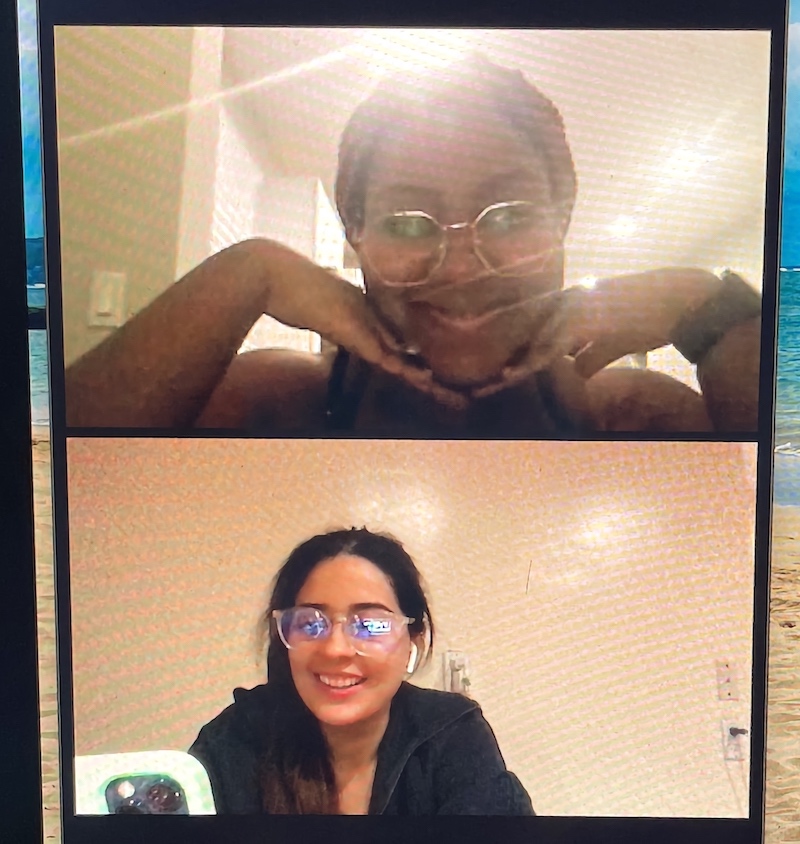
My friend Kim and I on a Zoom study break!
T — Take Practice Tests
Taking practice tests is SO useful because it combines all of the skills you need to be successful on the actual exam. They help build endurance, help determine how long you take to complete the exam, and illuminate areas for you to focus on during your studies!
123s
Another huge component of NBCOT prep is making sure that you are taking care of yourself so that you have the energy and mental capacity to study! This is more easily said than done but hopefully these tips will help.
1 — Listen to Your Mind and Body
Honestly, some days are going to be better than others. Some days you are going to be studying and really understanding the material and motivated to keep going. Other days, you may be tired, overwhelmed or busy with other things, or just not have the energy to study. And guess what, that’s OKAY! The process of studying for this exam is just that, a process, and the results will be a culmination of the effort you put into your preparation. That means, if one day you feel like you just cannot focus or are too exhausted to study, give yourself some grace and rearrange your study schedule. I promise it is 100% better than trying to push through and burning yourself out. Extra Tip: schedule rest days into your study schedule! It can help ease the apprehension that can come with taking a day off!
2 — Do Your Self Care!
This counts for during your studying as well as before the exam. This is a great time to practice what we preach, take time to do the small things that make you happy and the things that make you feel like your most authentic self. It is easy to assume the identity of “studying for the NBCOT” and let that and the stress consume us (guilty as charged) but it doesn’t have to be that way.
Extra-Extra Tip: The day before your exam, don’t touch any of your study materials and schedule some R&R activities for yourself. Spend some time with family or friends, grab your favorite latte, just do things that make you feel good. I promise, your brain and body will thank you.
3 — Affirm and Reaffirm Yourself . . . and Reaffirm Yourself Again!
Mindset is EVERYTHING and this starts way before test day. While you are studying it is easy to get down on yourself or doubt your abilities but it is important to reaffirm yourself that you can do this! Positive self-talk and reframing how you’re feeling will go miles farther than putting yourself down; it could even be the extra edge that helps you pass.
⋯
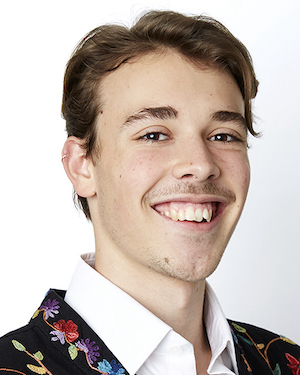
From Inside of Your Mind to Outside of Your Closet: Making a Case for Dressing ⟩
November 22, 2021, by Seth
We all know that a good dressing can make or break a salad, but what can it do for your day? No, I’m not talking about dousing yourself in ranch, Italian, or even a tasteful balsamic vinaigrette, this blog is about clothes! The American Occupational Therapy Association’s Occupational Therapy Practice Framework (OTPF): Domain and Process (4th ed.; 2020) defines dressing as:
Selecting clothing and accessories with consideration of time of day, weather, and desired presentation; obtaining clothing from storage area; dressing and undressing in a sequential fashion; fastening and adjusting clothing and shoes; applying and removing personal devices, prosthetic devices, or splints. (p. 30)
When I am asked about dressing, however, I simply define it as one of my favourite occupations.
We all know the basics: is it hot outside? Put on a t-shirt. Is it time for bed? Time for pajamas! Do you have an interview later today? Gotta wow them with your best business casual. Some people may find these decisions a chore, as something that takes up those precious moments in the morning that you could instead use to snooze your alarm. It could even be that you may be one of these people, but I often think that there are a lot of missed opportunities when it comes to dressing and I’m here to push the envelope. Although AOTA’s definition is dynamic, two parts stand out, two parts that open the door for this conversation, and those are “consideration” and “desired presentation.”
The Black
I have to admit that it took me some time to understand the nuances of what “desired presentation” really meant. To set the scene for you, I want to take you on my personal journey with the occupation of dressing. If a stranger looked at me in high school, they would probably describe my sense of style as “prep.” Without fail you could spot me in a neutral or plaid button-up shirt with sleeves cuffed to the forearm over a standard pair of khakis. I woke up every morning, donned a variation of this outfit, and walked out the door without a second thought. When I look back at that time, however, I think that by dressing in preppy I was actually prepping for a day that I thought would change everything; the day I came out as gay. I thought that if I made the way I looked more palatable and if I blended in more that when the day came, people wouldn’t be so quick to reject me. That they’d at least think twice about it. It turns out that every seemingly unconscious dressing decision I made considered that outcome and I so desperately wanted it to not be the case.
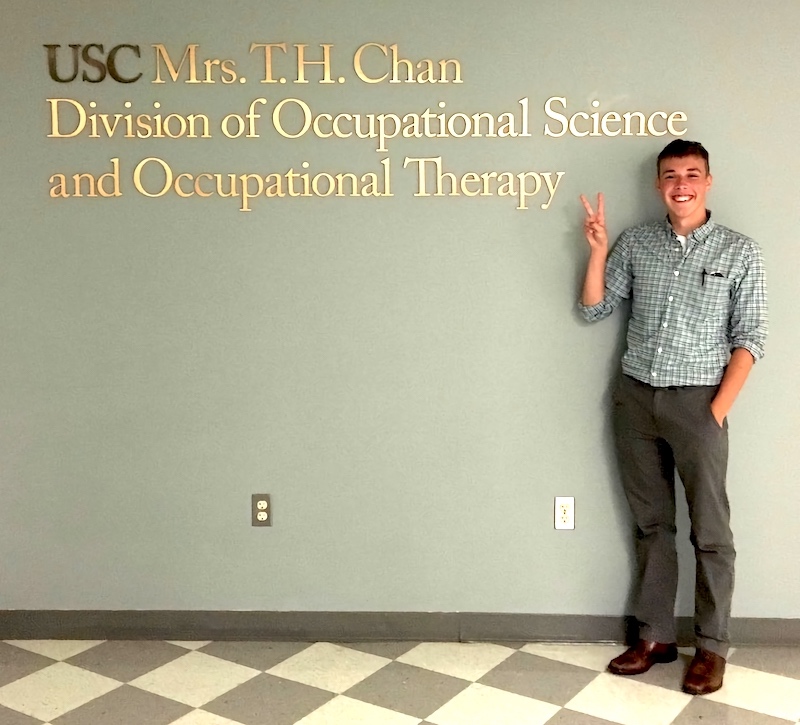
High School Seth before the first week of classes at USC in August 2017, AKA photographic evidence of the aforementioned button-up, cuffed sleeves, and khakis.
The White
Things began to change my senior year when I realized that that time in my life was coming to an end. Graduation was on the horizon and I began to loosen my collar, wear some jeans every once in a while, and add some colour into the rotation. Then came the news that I was admitted to USC’s BS-MA program and, although it was months before the semester started, my mind was already in LA. What was I thinking about? That a new place meant a new me, and even more importantly, a new wardrobe. I started to go thrifting and over time, with the support of my lovely community, I decided to let the world know I was capital G-A-Y, GAY! When I got dressed in the morning, this was the desired presentation I coordinated everything around. USC just had to know. Talk about a complete 180°.

First-Year Seth at his first LA Pride, June 2018. To this day, I stand by this outfit.
And All the Colours In-Between
As the years have passed, and as I’ve grown with my intersectional identities, the way I dress has grown with me and now lies somewhere in the middle of that spectrum. I think the single-driving force that informs how I dress is not what I want for others to see, but what I want for myself. On a cloudy day, I’ll bring my own sunshine by wearing my brightest outfit. As the leaves start to change colours, I’ll camouflage myself to match.
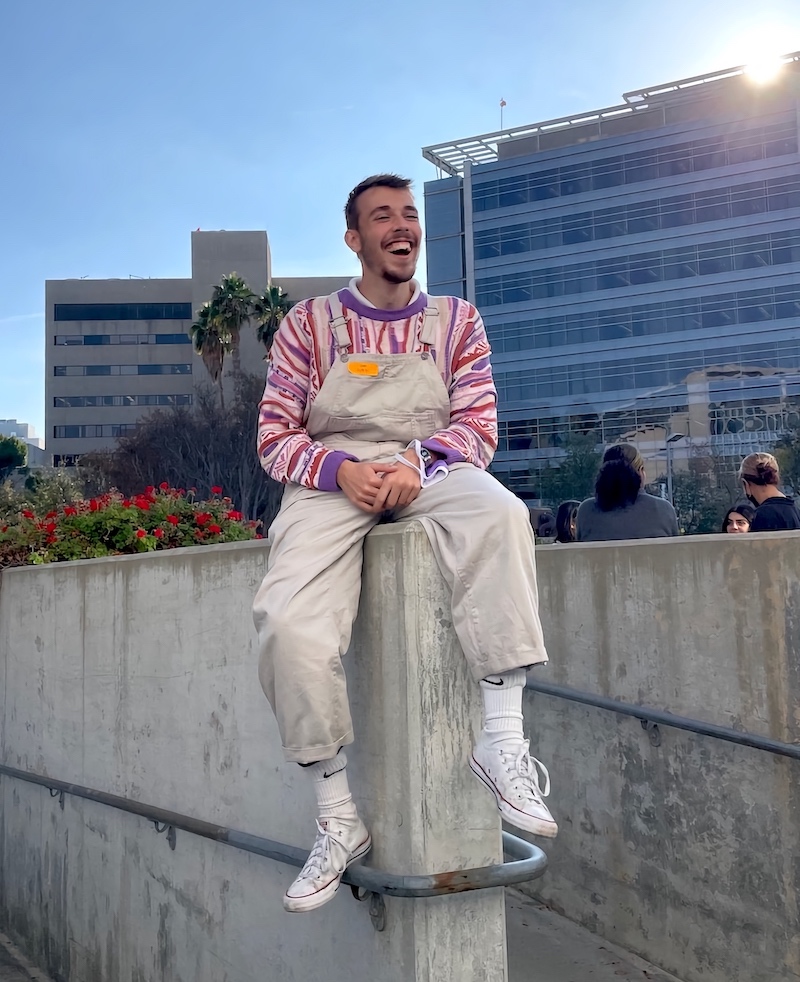
Me this semester, November 2021, comfy and coordinated down to a lavender mask.
I’ve found that weather and time can only change so much, but what I feel when I wake up in the morning is always something new. It’s this uncertainty that makes dressing exciting to me. It’s how one day a shirt can convey one message, but the next day when paired with a different pair of pants it says something totally different. Although what I consider may seem to be more considerate of myself, I want to highlight, however, that High School Seth was just as authentic as First-Year Seth who is just as authentic as the Seth I present to the world now. The one thing that they all have in common, and the thing we all have in common regardless of our identities, is that in each stage there was an intention for a specific desired outcome. Although this blog shares my story, it by no means is meant to capture anyone else’s. That being said, we all get dressed and we all make decisions while doing so. I invite you to take a closer look at the dressing decisions you make, and who knows, you may even help a client do the same in your future practice! Here are some questions to help guide you as you embark the journey to making dressing one of your favourite occupations too:
- What is your intention for the day and what ways do you desire being perceived? How can you align the two?
- Do the clothes you chose match how you feel? Or do they reflect how you want to feel? How does the way you dress support your social and emotional health? Think style with a side of self-fulfilling prophecy!
- How does dressing interact with other occupations? Does it influence your social participation? What’s its relationship with hygiene and grooming occupations?
- I shared how I use dressing to express my identities, do you use dressing to express yours? If yes, which and how?
- Who says dressing can’t be leisure or play! If today was a costume party, what theme would you dress for?
And lastly, it’s a new day, what do you want to put out into the world?
⋯
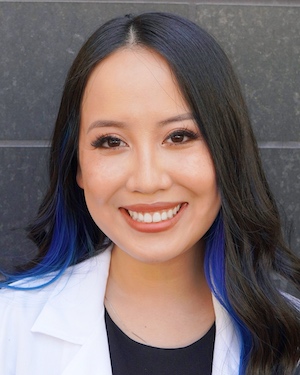
Fight, Fight, Fight On! ⟩
November 19, 2021, by Teresa
Admissions Classes Diversity Living in LA
Tomorrow is the big game and with it comes the long-standing question of Los Angeles: “USC or UCLA?” Forget sideline reporters, say goodbye to sports commentators, play-by-play who? I believe I am the most qualified individual to provide an answer for these reasons:
- I went to UCLA
- I go to USC
- Refer back to reasons 1 and 2
All jokes aside, when I committed to USC for graduate school, I had some concerns about how I would transition from the nation’s #1 public university into the #1 occupational therapy program. Without further ado, here is one Brojan (Bruin turned Trojan, or vice versa)’s totally impartial, and absolutely not at all biased, take on my experiences at both schools.
Quarter System vs. Semester System
At UCLA, we followed a quarter system, meaning each term was 10 weeks long, three terms each academic year. Because of how fast-paced this was, I thought a semester system would be an easy adjustment but sometimes, it still feels like my mind functions on 10 weeks’ time. Kind of like when you return from traveling somewhere really far and have to readjust to the time difference. Yeah — just like that, but for a much longer period of time. For example, I am currently entering week 14 out of 16 and my mind is saying to the semester, “You’re done. You’re done. You should be three weeks into the next term already.” Because 16 weeks and NOT 10? The math is just not mathing for me. What does make sense for me, however, is how nice it feels to have time to sit with content, follow up about anything I need clarification on, and really feel like I’m learning and not just regurgitating. And it doesn’t hurt that with the longer terms come longer breaks!
Public University vs. Private University
Growing up, the words “private school” sounded so elite and since public school was all I had known, attending a public university like UCLA after high school felt like the natural progression, so I didn’t even bother applying to USC.
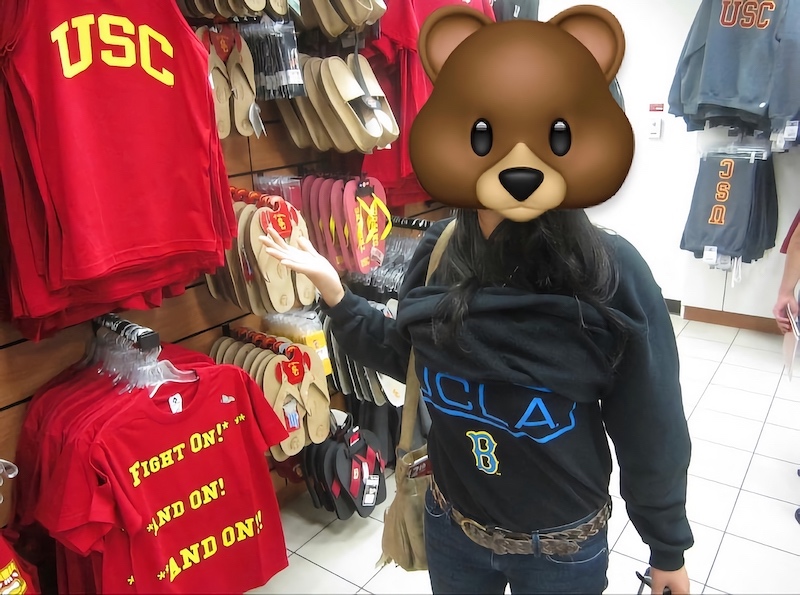
Sophomore me visiting the USC Bookstore on a high school field trip in May 2012. The irony is not lost on me that I now have the sweater in the background, which I am currently wearing while writing this.
When applying to OT school, a part of me still held the notion that private = elite and public = diversity, but that myth was quickly dispelled when I met my classmates, who are each so different and unique in their backgrounds, life perspectives, age, appearance, and interests, thanks to the holistic admissions process implemented at USC Chan. The insights shared by my classmates both in and out of the classroom have been quintessential to facilitate my learning as I continue to develop my clinical identity. I feel an immense sense of pride knowing that my classmates will be entering practice as some of the most culturally responsive clinicians this field has to offer and that their clients and future generations will be able to see themselves in their providers.
My family always emphasized that education is an investment to give myself the best chance at life, so when deciding which program to attend, what better is there than the best? I could think of no better place to invest in myself than at USC Chan, which, in case you forgot, is the #1 occupational therapy program in the nation, and it shows. It’s pretty surreal to walk the halls of the Center for Health Professions (CHP) and know that it’s the birthplace of sensory integration, occupational science, Lifestyle Redesign, and so much more. Occupational therapy students all over the world are learning through textbooks written by the same professors you get to see face-to-face everyday. Since starting this program, it’s been clear that our faculty, staff, ambassadors, student leaders, and alumni are committed to fostering a space where the next generation of occupational therapists can both advocate for our profession while challenging it to change to meet client needs.
Undergraduate Degree vs. Graduate Degree
The pursuit of my undergraduate degree was filled with twists and turns regarding what career I wanted that degree to lead to — pediatrician, lawyer, software engineer, teacher, and at one point, even paleontologist! I am always amazed (and slightly jealous) when I hear Bachelor’s to Master’s students share why they chose to pursue OT when they were a senior in high school, because I didn’t know about OT until I was 20. While I don’t regret my journey because it’s what led me here today, I will say school was so much harder when I didn’t know what I was meant to do. It was also so much harder when I couldn’t imagine myself ever using organic chemistry or multivariable calculus in my career, yet still had to take those classes in order to get my degree. To this day, the fact that I know how to draw molecular structures using benzene rings or chair conformations has not served me. Not once!
Entering graduate school provided an opportunity for a clean slate. I was able to start over as a student at a new school but this time, as a student with a strong understanding of what I wanted while taking courses focused on what I was interested in. By acknowledging that all of the content I learn in the classroom could be applied to practice, being a student has become a more engaging and meaningful experience.
So, USC or UCLA?
This question is hard to answer because ultimately, I am so thankful to both. My experiences at UCLA led me here to USC, where I find myself growing professionally and personally everyday. Both allowed me to be close to home and near my family, who I wouldn’t be here without. At one, I was able to identify my weaknesses and at the other, take a strengths-based approach. This past weekend, I showed my friends Silvia and Vanessa around UCLA, where we sat next to Janss Steps and talked for hours.
While walking the same paths I used to take to class, I remembered how I felt there when the thought of becoming an occupational therapist seemed like a distant, unattainable dream because I couldn’t see past who I was on paper — just another GPA, GRE score, and 1000 words. And becoming a USC Chan occupational therapist? Dream on.
Look at you now. Fight, fight, fight on. 💙 🐻 💛 ✌️ ❤️
⋯






